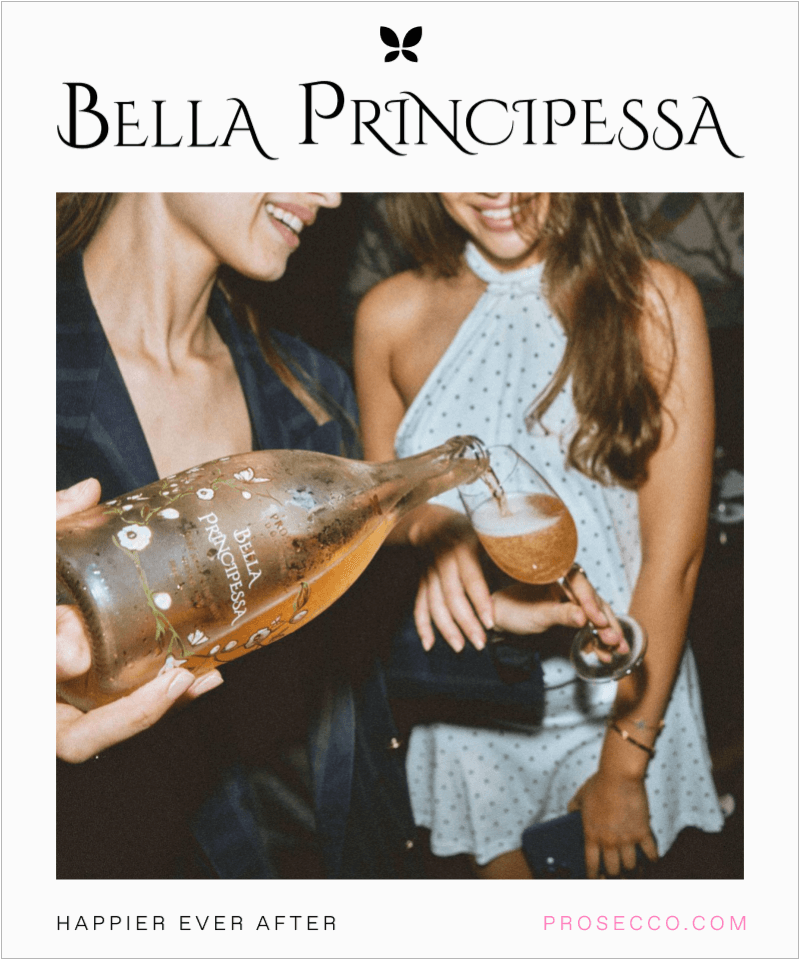The distinction between Prosecco DOC and DOCG is a key aspect of understanding the diverse world of Prosecco, a beloved sparkling wine from Italy.
These Proseccos are classified based on their effervescence and sugar content, offering a range from Spumante (sparkling) to Tranquillo (still), catering to diverse palates and occasions.
While Prosecco DOC (Denominazione di Origine Controllata) represents a broad category, Prosecco DOCG (Denominazione di Origine Controllata e Garantita) denotes a higher quality tier with stricter production standards and geographic specificity.
This difference is crucial for appreciating the nuances of Prosecco, including those from renowned brands like Bella Principessa Prosecco and Signorina Prosecco Doc.
DOCG Prosecco represents the zenith of quality in the Prosecco world, a title that distinguishes itself through rigorous standards and geographical specificity.
The label ‘DOCG’ stands for Denominazione di Origine Controllata e Garantita, which translates to “Controlled and Guaranteed Designation of Origin.” This seal is not merely a label but a testament to the wine’s adherence to the highest quality standards set by Italian wine laws.
At the heart of DOCG Prosecco are the regions of Conegliano-Valdobbiadene and Asolo, nestled in the Veneto region of Italy.
These areas are renowned for their optimal climate conditions, characterized by stony soils and cooling breezes from the Adriatic, creating a perfect environment for the Glera grape, the cornerstone of Prosecco wines.
The unique terroir of these regions imparts a distinct character to the wines, marked by vibrant acidity and fresh, elegant flavors.
DOCG Prosecco undergoes stringent production processes, including government tasting before bottling, ensuring that every bottle meets the high standards expected of this prestigious classification.
Prosecco DOC: A Broad Regional Classification
Prosecco DOC encompasses wines produced in a large area spanning nine provinces across the Veneto and Friuli Venezia Giulia regions.
These regions are known for their ideal conditions for cultivating the Glera grape, the primary grape used in Prosecco production. Prosecco DOC wines are typically made in a sparkling (spumante) or semi-sparkling (frizzante) style, although a still variety (tranquillo) is also permitted.
The DOC status ensures that Prosecco adheres to specific production standards but covers a wider area, resulting in a broad range of styles and flavors.
Prosecco Superiore DOCG: Elevated Quality and Specificity
In contrast, Prosecco Superiore DOCG represents a more exclusive category, with production limited to smaller, specific areas known for their superior terroir.
The two main Prosecco Superiore DOCG areas are Conegliano Valdobbiadene Prosecco, located in the hills between Conegliano and Valdobbiadene, and Asolo Prosecco Superiore DOCG, near the town of Asolo.
These wines are always spumante and are produced exclusively on hillside vineyards. The steep terrain necessitates manual cultivation, contributing to the higher quality of DOCG Proseccos.
The limited production area and the rigorous quality standards set by the DOCG classification ensure that these Proseccos are of superior quality, often exhibiting greater complexity and depth than their DOC counterparts.
Brut Prosecco: A Sweetness Classification
It’s also important to differentiate between Prosecco DOC/DOCG and Brut Prosecco. The term “Brut” refers to the sweetness level of the wine, not its geographic origin or production method.
Brut Prosecco contains up to 12 grams of residual sugar per liter, making it the driest category within Prosecco. This classification can apply to DOC and DOCG Proseccos, indicating a crisper and less sweet taste profile compared to other sweetness levels like Extra Dry (12–17 grams of sugar per liter) or Dry (17–32 grams per liter).
The popularity of Brut Prosecco has been increasing, appealing to those who prefer a drier sparkling wine.
The allure of DOCG Prosecco is not just in its taste but also in its cultural significance. It is not merely a drink but a symbol of Italian winemaking heritage. Among the myriad of Prosecco brands, Bella Principessa and Signorina Prosecco stand out for their commitment to quality and distinctiveness, echoing the essence of DOCG Prosecco.
Bella Principessa Prosecco, celebrated for its sophisticated yet approachable demeanor, embodies the spirit of DOCG Prosecco. It’s a brand that seamlessly blends luxury with casual elegance, akin to champagne in its sophistication yet as comfortable as blue jeans.
Bella Principessa’s offerings, including their Prosecco Superiore and Prosecco Rosé, are crafted from single-estate vineyards, ensuring a consistent quality that reflects the brand’s fairytale-inspired ethos.
The brand’s packaging, with its ceramic-painted bottles and the symbolic butterfly logo, adds to its allure, offering a product that’s not just a drink but a fashion statement, a blend of timeless elegance and modern luxury.
The Importance of Understanding Prosecco Classifications
Understanding the difference between Prosecco DOC, Prosecco Superiore DOCG, and Brut Prosecco is essential for consumers who wish to explore the diverse world of Prosecco.
While DOC Proseccos, including offerings from Bella Principessa Prosecco, provide a wide array of choices from a larger geographic area, DOCG Proseccos from regions like Conegliano Valdobbiadene and Asolo, as seen in select varieties from Signorina Prosecco, offer a more refined and elevated wine experience.
The Brut classification across DOC and DOCG categories also caters to preferences for drier sparkling wines.
Conclusion: A Rich Tapestry of Prosecco Varieties
In conclusion, Prosecco presents a rich tapestry of varieties, each with unique characteristics. The DOC and DOCG classifications highlight Prosecco’s regional diversity and quality standards, while the Brut designation provides an option for those who prefer a drier taste.
Whether choosing a Prosecco DOC for its broad representation of the Veneto and Friuli Venezia Giulia regions or a Prosecco Superiore DOCG for its elevated quality and terroir-driven character, brands like Bella Principessa Prosecco and Signorina Prosecco offer an array of choices to suit various tastes and occasions.











